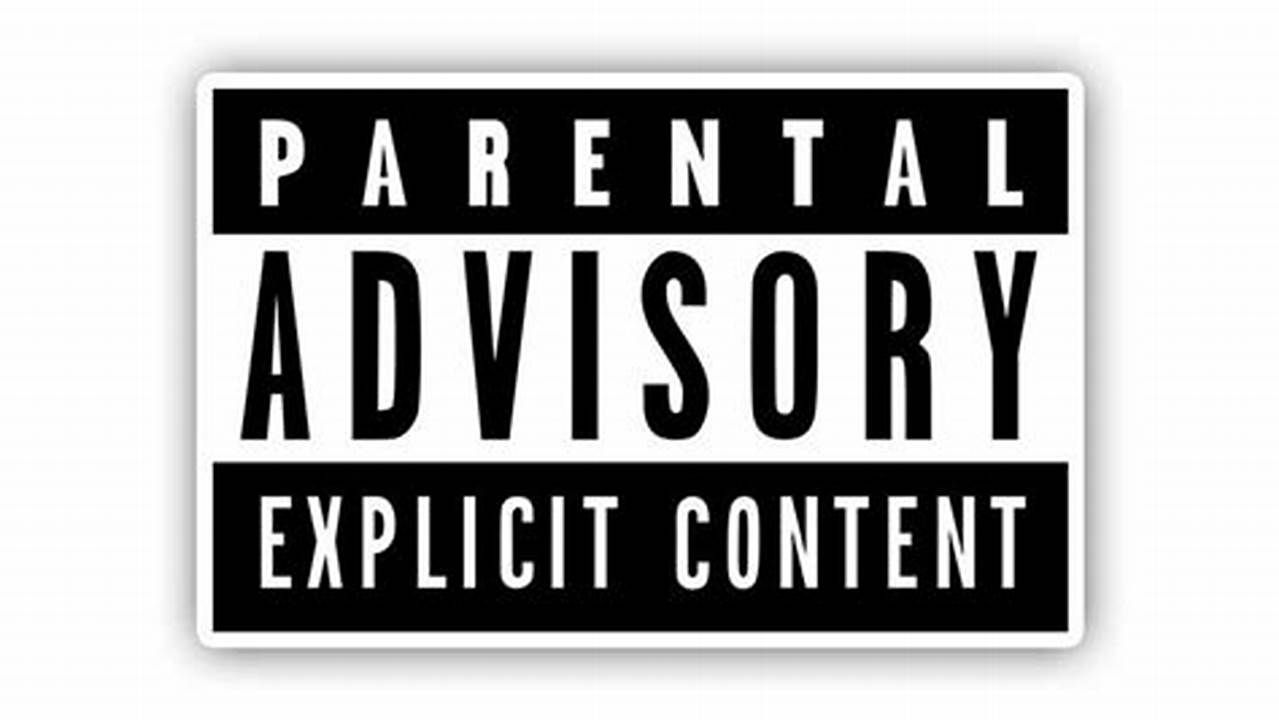Understanding media content labeling is crucial for parents and families. This guide provides a comprehensive overview of parental advisory labels, specifically focusing on music recordings. These labels serve as a valuable tool for informed decision-making regarding age-appropriate content consumption.
History and Purpose
Parental advisory labels originated from public concerns regarding explicit content in music. They offer a standardized system to alert consumers, particularly parents, about potentially sensitive material, empowering them to make conscious choices for their children.
Labeling Criteria
Specific criteria, including lyrical themes, language, and depictions of violence or substance abuse, determine whether a recording receives a label. These criteria are regularly reviewed and updated to reflect evolving societal standards.
Variations and International Equivalents
Different regions and countries may employ variations of the parental advisory label or utilize their own unique systems. Understanding these variations is essential for navigating media from diverse sources.
Digital Platforms and Labeling
The prevalence of digital music platforms presents new challenges for content labeling. While many platforms incorporate parental advisory information, consistency and discoverability remain areas for improvement.
The Role of Parents and Educators
Open communication between parents, educators, and children about media literacy and responsible consumption is vital. Parental advisory labels are a starting point for these conversations.
Beyond Music: Labeling in Other Media
Similar labeling systems exist for other forms of media, such as video games and movies. A comprehensive understanding of these systems contributes to a safer media environment for families.
Limitations and Criticisms
While valuable, parental advisory labels are not without limitations. Subjectivity in interpretation and potential for over-labeling are among the criticisms leveled against the system.
Industry Self-Regulation vs. Government Intervention
The current system largely relies on industry self-regulation. The ongoing debate surrounding government intervention and censorship in media labeling continues to evolve.
The Future of Content Labeling
As technology and media consumption habits change, content labeling systems must adapt to remain effective. Ongoing dialogue and research are essential to ensuring these systems serve their intended purpose.
Tips for Utilizing Parental Advisory Labels
Tip 1: Familiarize yourself with the specific criteria behind the labels to understand their implications.
Tip 2: Engage in open discussions with children about media content and the meaning of the labels.
Tip 3: Utilize parental control features available on various devices and platforms to manage access to content.
Tip 4: Remember that labels are a guide, not a substitute for parental involvement and judgment.
Frequently Asked Questions
How are parental advisory labels assigned?
The recording industry, typically through designated committees, assigns labels based on established criteria.
Are parental advisory labels legally enforced?
No, they are voluntary guidelines, not legally binding restrictions.
Do all music platforms display parental advisory labels?
While many do, consistent application across all platforms remains a challenge.
Can I challenge a parental advisory label on a recording?
There are typically channels within the recording industry to address concerns about label application.
What can I do if I disagree with a label’s assessment?
Parental discretion is paramount. Choosing not to purchase or allow access to the content is ultimately the parent’s prerogative.
What role do retailers play in enforcing parental advisory labels?
Many retailers adhere to voluntary guidelines regarding the sale of labeled recordings to minors.
Navigating the complexities of media content requires vigilance and informed decision-making. Understanding and utilizing parental advisory labels is a crucial step towards fostering a healthy media environment for families.


